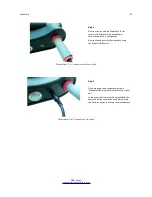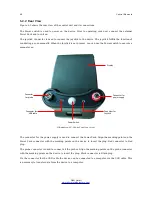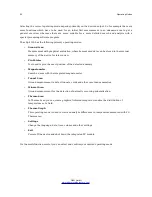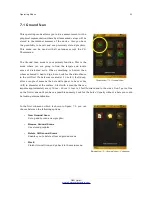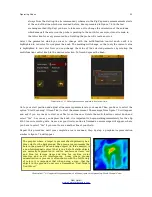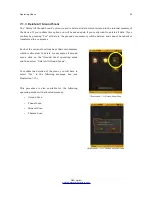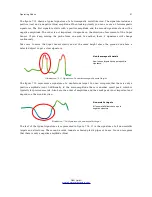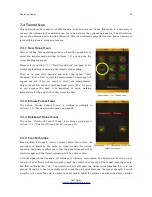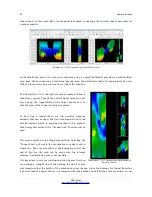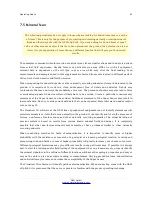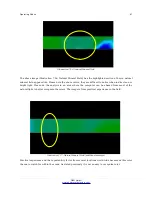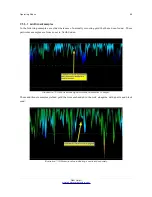
Operating Modes
57
The figure 7.12 shows a typical signature of a ferromagnetic metal like iron. The signature includes a
positive (red) and a negative (blue) amplitude. When looking closely you can see even 2 ferromagnetic
signatures. The first signature starts with a positive amplitude and the second signature starts with a
negative amplitude. The order is not important, it depends on the direction of movement of the Super
Sensor. If you keep moving the probe from one side to another, these 2 signatures will change
continuously.
Take care to move the Super Sensor slowly and at the same height above the ground and above a
detected object to get a clear signature.
The figure 7.13 represents a signature of a non-ferrous target. You can recognize that there is only a
positive amplitude (red). Additionally to the main amplitude there is another small peak, which is
typically for precious metals. Also here the order of amplitude and the small peak is not important and
depends on the scan direction.
The last of the typical signatures is represented in figure 7.14. It is the signature of all non-metallic
targets and structures. These can be voids, tunnels or buried plastic pipes or boxes. You can recognize
that there is only a negative amplitude (blue).
OKM GmbH
www.okmmetaldetectors.com
Illustration 7.13: Signature of a non-ferromagnetic metal target
Non-ferromagnetic metals
Non-ferrous targets have a pure positive
signature.
Illustration 7.14: Signature of a non-metallic target
Non-metallic targets
All non-metallic items have a pure
negative signature.
Summary of Contents for eXp 4500
Page 1: ...FS Future Series eXp 4500NT Version 1 5 User s Manual ...
Page 5: ...5 9 2 Control Scans 93 OKM GmbH www okmmetaldetectors com ...
Page 9: ...1 Introduction CHAPTER 1 Introduction ...
Page 14: ......
Page 35: ...3 Technical Specifications CHAPTER 3 Technical Specifications ...
Page 39: ...4 Scope of Delivery CHAPTER 4 Scope of Delivery ...
Page 44: ......
Page 78: ......
Page 88: ......

